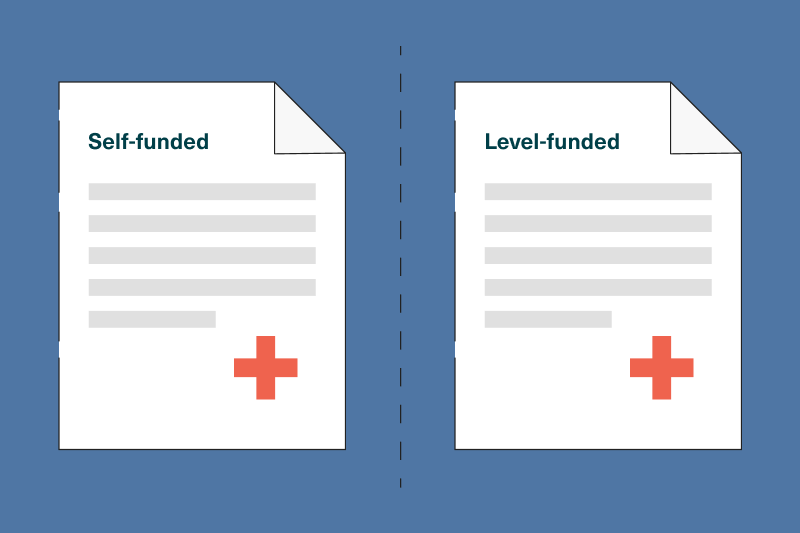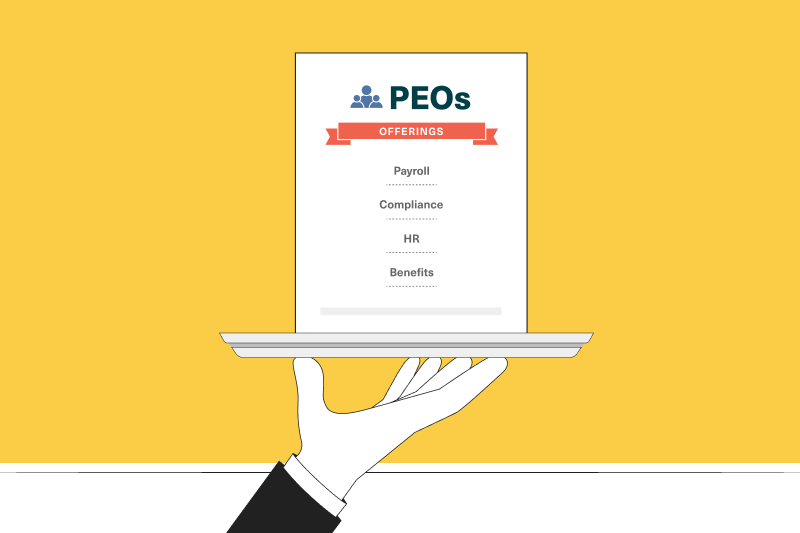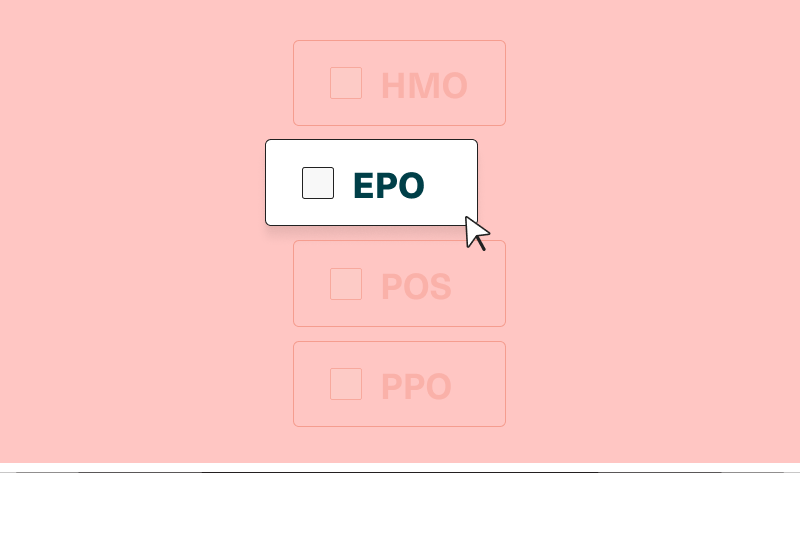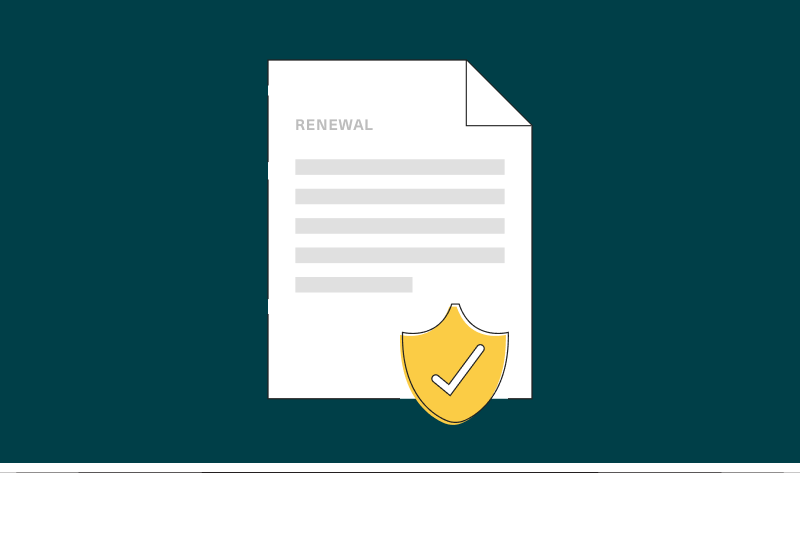Self-Funded vs. Level-Funded plans: What’s the Difference?

Last updated on April 5, 2023
Considering self-insured health plans for your employees can be difficult, especially if you’re not familiar with all of the available options. If you’re doing your research, you may be wondering which is better: self-funded or level-funded plans?
Let’s go over the basic definitions and explore the differences between level-funded and self-funded health plans so you can make the best decision.
Self-funded and level-funded plans explained: An overview
Self-funded healthcare plans use pay-as-you-go financing, with the employer assuming the financial risk of providing healthcare benefits to your employees.
Level-funded healthcare plans set a limit, or a stop-loss, on the costs the employer may face by assuming the financial risk. This is achieved by working with a third-party administrator or insurer, which funds a reserve account for costs and claims.
As a small business owner, these healthcare plan models may be unfamiliar. Legacy carriers (BUCAs) offer fully-funded plans, which have historically been considered the only or best option.
In the fully-funded healthcare model, the insurance company sponsors and holds the insurance policy, while your company would pay a fixed monthly fee to cover the employee claims and benefits administration. An insurance company, not the employer, sponsors a fully-funded plan and holds the insurance policy.
Unlike other models, the rates of fully-funded plans can’t be customized to the healthcare costs of your group. This may make them a good choice for groups with higher than average healthcare costs, but a poor one for those with lower than average costs. Further, there is no opportunity for a refund or rebate of unused claims dollars at the end of a fully funded policy.
Why self-funded and level-funded plans are gaining popularity
The expense of fully-funded plans is one reason why self-funded and level-funded plans’ popularity increased over the years for small companies and is still on the rise. Here’s some data to back that up:
- In 2020, 60% of covered workers in firms with three or more employees were in partially or entirely self-funded plans.
- In 2022, 65% of covered workers in small firms are in a plan that is either self-funded or level-funded, showing consistent buy-in since the 24% registered in 2019.
- 38% of small firms offered a level-funded plan in 2022 – almost 200% growth compared to 2020 when only 13% of small firms offered a level-funded plan.
4 differences between self-funded and level-funded health insurance plans
| Plan Features | Self-funded Plan | Level-funded Plan |
| Funding Model | Pay-as-you-go | Fixed monthly amount |
| Risk Responsibility | Employer only | Shared risk with stop-loss insurer |
| Cost Management | Unpredictable due to potential ‘catastrophic’ claims | Predictable as carrier’s stop-loss insurance covers excessive costs |
| Savings Potential | Higher potential if employee claims are lower than expected | Savings rebate or credit at end of plan year only if claims are lower than anticipated |
Self-funded insurance plans
With many self-insurance plans, you pay for what your employees use. You may pay less than expected if employees have fewer claims than you budgeted for, or you may pay more than anticipated if employees make excessive health claims. This is the financial risk of the self-funded model.
As a result, employers can find it hard to plan for their healthcare costs. Having more claims than expected or just one “catastrophic” claim can consume healthcare budgets, leaving you scrambling to make up the difference. For example, a large claim early in the plan year could deplete an entire annual budget.
Self-funded plans are not subject to state insurance regulations & tax payments but are regulated by federal law, such as the Employee Retirement Income Security Act (ERISA).
Related: Self-funded health insurance pros and cons
Level-funded insurance plans
With a level-funded plan, employers pay a fixed monthly amount for each employee’s benefits. If claims are lower than anticipated, you may get a rebate or a credit towards next year’s policy. If claims are higher than a predetermined level (or cap), then your carrier’s stop-loss insurance covers the excessive costs. Your payments are “level.”
As a result, employers with level-funded plans have peace of mind they’ll avoid unexpected high fees and can more accurately predict their healthcare budgets. And while there can be more regulatory requirements involved in a level-funded plan, working with an insurance carrier removes most of the burden from the employer.
Related: Level-funded health insurance pros and cons
How else are level-funding health plans different?
Here are 5 more differentiating factors of level-funding insurance:
- Flexible benefits: Level-funded plans have more flexible benefits for small and midsize businesses. Companies can customize the options based on the features and coverage employees will prefer, and available budget. Also, premium carriers offer more modern benefits, such as zero cost telemedicine, mental healthcare, physical wellness, and maternity-specific perks.
- Customer service: Top level-funded insurers offer dedicated, qualified customer service professionals who will help you and your employees navigate their benefits, process claims, and complete other administrative procedures.
- Access to technology: Modern, state-of-the-art insurance carriers that offer level-funded plans will provide your HR staff and any other administrators with apps and tools to manage health benefits with ease.
- Small business-friendly: Small and midsize businesses increasingly choose level-funded plans. Because the ACA introduced tax credits for companies with 2-49 employees offering healthcare, level funding has entered the spotlight as many small businesses provide healthcare for the first time.
- Access to plan data: Having access to plan data is another level-funded benefit. Your company keeps total control of the amount and types of claims you pay. Greater data transparency will enable you to implement proactive wellness and prevention initiatives for your employees.
Related: The Small Business Guide To Offering Employee Benefits
Should You Offer a Level-Funded Plan?
When considering level-funded vs. self-funded plans, ask yourself if you’re comfortable taking on the risks of higher than expected claims yourself, or would prefer that risk fall on a stop-loss insurer. Most true self-funded plans are administered by relatively large employers whose claims tend to be much more predictable than those of small businesses.
On the other hand, a level-funded plan may be more suitable for you if:
- You’re a startup, small, or even midsize business.
- Your group has lower than average healthcare costs
- You want more flexibility, greater control over your plan, and more predictability from year to year.
- Your company’s location allows for level-funded plan adoption. State regulations will determine payment and other terms. Make sure you research the applicable conditions based on your specific company before deciding if level-funding is right for you.
Related: Buying small business health insurance in Texas: The ultimate guide
Sana will help you define the best level-funded plans that adapt to your business needs. Obtain premium benefits for your employees with full medical, dental, vision, and more without the hassles and high costs of traditional carriers. Learn about our plans.
Additional FAQs
A level-funded health plan is not a fully insured plan. Rather, it is a hybrid of self-funding and fully-insured plans. The level of risk assumption is shared by both the employer and the insurance carrier, and protected by stop-loss insurance.
When a plan is self-funded, the employer is taking on 100% of the financial risk for providing healthcare benefits to its employees.
Yes, self-funded plans generally have deductibles. Self-funded plans typically have more flexibility than traditional fully-funded plans so the specific details & pricing of deductibles will vary. It will also depend on if the plan uses an open-access network.






